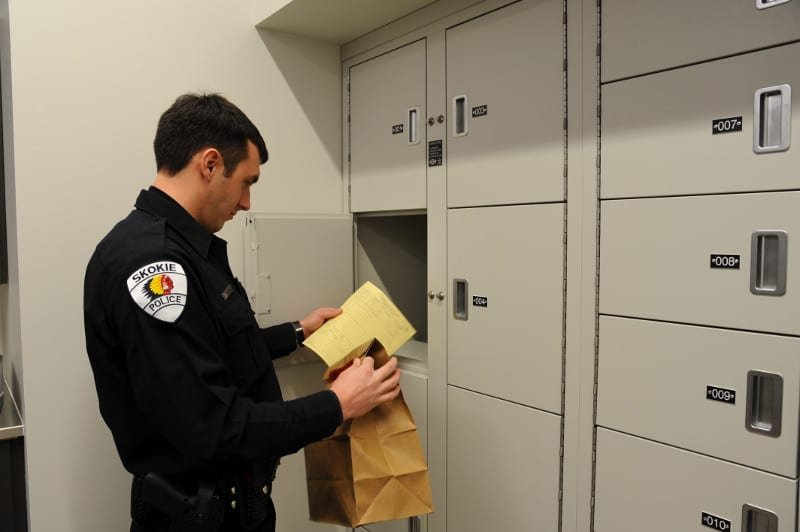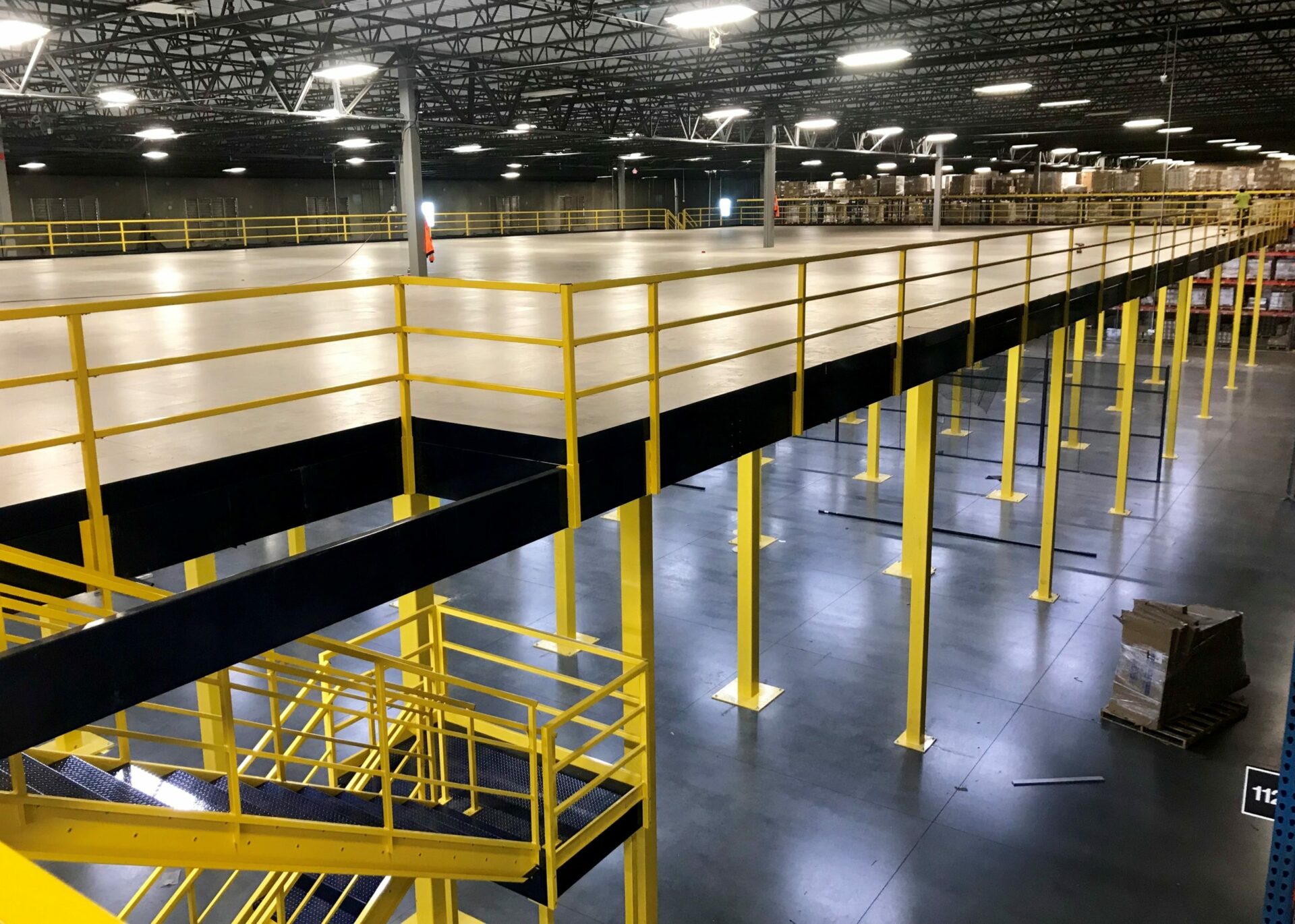
In the field of law enforcement, security is of utmost importance. Law enforcement agencies are responsible for maintaining public safety, upholding the law, and protecting communities. With the evolving security threats, there is a rising need for enhanced security measures in law enforcement. One crucial aspect of security is the proper storage of weapons and gear. Innovative storage solutions play a vital role in ensuring the security and accessibility of law enforcement equipment. In this blog, we will explore the necessity of advanced security in law enforcement, the evolution of weapons storage, the role of accessibility, and the future of storage solutions in law enforcement.
The Necessity of Advanced Security in Law Enforcement
Security is a top priority in law enforcement, as it directly impacts the safety of both law enforcement personnel and the public. Law enforcement agencies play a vital role in maintaining public safety, upholding the law, and preventing crimes. They collaborate with communities to enhance their effectiveness in ensuring security and order. But with the increasing complexity of security threats, law enforcement agencies need to adopt advanced security measures to effectively counter these risks. Enhanced security measures are crucial for safeguarding critical assets, infrastructure, and the people who depend on law enforcement for protection.
Law enforcement agencies serve as the first line of defense in maintaining public safety. Their primary objective is to uphold the law, prevent crimes, and protect communities from threats. Law enforcement personnel work tirelessly to ensure order, respond to emergencies, and provide support services. They collaborate with community members, government agencies, and first responders to enhance public safety. Law enforcement’s role extends beyond law enforcement, as they are also responsible for providing emergency response and support services, such as disaster management, traffic control, and crowd management.
The Rising Need for Enhanced Security Measures
The evolving security landscape demands enhanced security measures in law enforcement. Law enforcement agencies face a wide range of security threats, including terrorism, organized crime, cybercrime, and other sophisticated criminal activities. To effectively counter these threats, law enforcement agencies must adopt advanced security protocols, technologies, and physical security measures. Enhanced security measures are essential for preempting potential security breaches, protecting critical assets, and ensuring the safety of law enforcement personnel and the public. Law enforcement agencies must continually adapt to meet the rising security challenges and stay one step ahead of criminals.
Exploring Innovative Storage Solutions for Weapons and Gear
Innovative storage solutions play a vital role in the security and accessibility of law enforcement equipment, specifically weapons and gear. These solutions have evolved over time, reflecting advancements in security standards and operational needs. Today, law enforcement facilities utilize a range of storage options, including gear lockers, smart lockers, and specialized weapon storage systems. These solutions prioritize security, organization, and ease of access, enabling law enforcement personnel to quickly retrieve their equipment when needed. In the following sections, we will delve into the evolution of weapons storage, the functionality of gear lockers, the advent of smart lockers, and the transformative impact of technology on storage solutions.
Over time, weapons storage in law enforcement facilities has undergone significant advancements to cater to the changing needs of law enforcement agencies. Early storage systems were simple, often consisting of basic gun cabinets or standard lockers. However, as law enforcement’s operational requirements evolved, so did the need for more sophisticated storage solutions. Modern weapons storage emphasizes accessibility, security, and organization. Today, law enforcement facilities utilize specialized weapons storage systems that can accommodate various types of firearms, optimize storage space, and provide enhanced security features to prevent unauthorized access or tampering.
The Functionality and Importance of Gear Lockers
Gear lockers are a crucial component of law enforcement facilities, providing secure storage for the equipment and gear used by law enforcement personnel. These lockers offer dedicated spaces for uniforms, protective gear, firearms, and other essential equipment. Gear lockers not only ensure physical security for the stored items but also contribute to the functionality and organization of law enforcement operations. Dedicated lockers allow officers to quickly access their gear, ensuring readiness for any situation. Additionally, gear lockers help maintain the longevity of equipment by protecting it from damage, wear, and tear.
With technological advancements, law enforcement facilities have witnessed the advent of smart lockers. These innovative storage solutions leverage advanced technologies to enhance security, accessibility, and inventory management. Smart lockers are equipped with sensors, RFID technology, and biometric access control, providing robust security measures to prevent unauthorized access. They also offer real-time tracking and monitoring capabilities, allowing law enforcement agencies to keep accurate records of stored items. Smart lockers streamline the process of equipment retrieval, improve accountability, and enhance operational efficiency, making them a valuable asset to law enforcement facilities.
How Technology has Transformed Storage Solutions
Technology has played a transformative role in the evolution of storage solutions for law enforcement. From traditional gun cabinets to advanced weapon storage systems, technology has revolutionized how law enforcement agencies store and manage their equipment. Integration of digital capabilities, automation, and real-time monitoring has greatly enhanced the functionality, security, and efficiency of storage solutions. Technology-driven storage systems allow for seamless inventory management, accurate tracking, and easy retrieval of items, ensuring law enforcement personnel have the right equipment at the right time. These advancements have transformed storage solutions from passive compartments to active, intelligent systems.
Implementing smart lockers can bring numerous benefits to law enforcement agencies. These benefits include:
- Enhanced Security: Smart lockers provide a high level of security, ensuring that only authorized personnel can access the stored weapons and gear, reducing the risk of unauthorized use or theft.
- Improved Efficiency: Smart lockers streamline the storage and retrieval process, allowing law enforcement personnel to quickly access their weapons and gear when responding to emergencies, saving valuable time in critical situations.
- Enhanced Accountability: Smart lockers create a digital audit trail, recording each interaction with the locker, which enhances accountability and provides a clear record of who had access to specific items.
- Effective Weapon Management: Smart lockers enable law enforcement agencies to track the condition and maintenance of weapons, ensuring that they are always in optimal working condition and ready for use.
- Seamless Integration: Smart lockers can be seamlessly integrated with existing security systems, allowing for a comprehensive security solution that encompasses both physical and technological aspects.
The Role of Accessibility in Storage Solutions
As law enforcement agencies strive to maximize their efficiency, accessibility becomes a crucial factor when selecting storage solutions. Easy access to weapons and gear is essential, especially in high-stress situations or emergencies.
Law enforcement personnel often find themselves in rapidly evolving and high-risk situations where quick access to their tools is critical. Easy access to weapons and gear ensures that law enforcement officers can respond promptly and effectively, enhancing their ability to protect themselves, their colleagues, and the general public.
Efficient access to weapons and gear is vital for law enforcement agencies to carry out their missions successfully. Quick and easy access can significantly reduce response times, enabling law enforcement personnel to swiftly react to incidents, apprehend suspects, and prevent further harm. By eliminating unnecessary delays, accessibility enhances overall law enforcement operational efficiency.
Innovative storage solutions not only offer enhanced security but also ensure easy accessibility for law enforcement personnel. Access control mechanisms such as biometric authentication, smart card systems, or RFID detection can be implemented in storage solutions to strike a balance between security and accessibility.
The Interplay between Security and Storage in Law Enforcement
Security and storage are intertwined elements essential for law enforcement agencies. Effective storage solutions provide security, ensuring that weapons and gear are protected, while security measures also contribute to enhancing storage practices, ensuring that stored items remain secure, accountable, and readily available when needed.
Implementing advanced security measures, such as smart lockers, has a significant impact on law enforcement effectiveness. By providing secure, accessible, and well-organized storage solutions, law enforcement agencies can optimize their operational readiness, response times, and overall effectiveness in protecting public safety.
Case Study: Successful Implementation of Innovative Storage Solutions
To illustrate the benefits of innovative storage solutions, let’s examine a case study that showcases the successful implementation of these solutions in a law enforcement facility.
In a recent initiative, a law enforcement facility aimed to enhance the security, accessibility, and efficiency of their weapon and gear storage practices. The facility implemented smart lockers equipped with various advanced security features, including biometric access control, real-time tracking, and RFID detection. This successful implementation resulted in several tangible benefits for the law enforcement agency.
Key Takeaways and Lessons Learned
The implementation of innovative storage solutions can greatly benefit law enforcement agencies. Some key takeaways and lessons learned from this case study include:
- Enhanced Security: The advanced security features of the smart lockers provided robust protection against unauthorized access, reducing the risk of theft or misuse of firearms and gear.
- Improved Accessibility: Law enforcement personnel experienced seamless and efficient access to their weapons and gear, enabling them to respond quickly to emergencies.
- Accountability and Traceability: Smart lockers ensured proper accountability by recording each interaction, fostering responsible use, and providing an audit trail in case of any incidents or investigations.
- Efficient Use of Space: The smart locker system optimized space utilization, allowing for efficient storage of weapons and gear, while maintaining ease of access for law enforcement personnel.
Selecting the right storage solutions for law enforcement facilities is crucial. Several factors need to be considered when deciding on the most suitable storage system, including security requirements, accessibility, scalability, and integration capabilities.
Factors to consider when selecting storage solutions include:
- Security Features: Look for storage solutions with advanced security features such as biometric access control, real-time tracking, and RFID detection.
- Accessibility and Efficiency: Prioritize storage solutions that provide quick and easy access to weapons and gear, ensuring law enforcement personnel can respond rapidly to emergencies.
- Scalability: Consider the scalability of the storage system, ensuring it can accommodate potential future growth or changing storage needs.
- Integration Capability: Look for storage solutions that can seamlessly integrate with existing security systems, creating a comprehensive security framework.
When selecting storage solutions for law enforcement agencies, factors to consider include the specific needs of first responders, ensuring physical security during special events, and compliance with government regulations. Additionally, assessing the resilience of storage units, their ability to handle different types of firearms, and the level of detection technologies integrated are vital. It’s essential to align chosen solutions with the operational requirements of law enforcement agencies while meeting the stringent standards set by federal agencies.
A comparative analysis can assist law enforcement agencies in making an informed decision. Consider factors such as security, accessibility, durability, customization options, and long-term cost-effectiveness. Conducting a thorough evaluation will ensure that law enforcement facilities choose the storage solutions that best meet their specific needs and requirements.
The Future of Storage Solutions in Law Enforcement
As technology continues to advance, the future of storage solutions for law enforcement agencies promises even greater innovation, security, and efficiency. Let’s explore some upcoming trends and innovations in law enforcement storage, as well as how law enforcement facilities can prepare for future storage needs.
The future of storage solutions in law enforcement is characterized by continuous advancements in security, accessibility, and efficiency. Some upcoming trends and innovations include:
- Artificial Intelligence Integration: AI-powered storage solutions can enhance security, analyze access patterns, and optimize inventory management.
- Cloud-based Storage: Storing data and managing access in the cloud enable law enforcement agencies to leverage scalability, remote accessibility, and data backup capabilities.
- Internet of Things (IoT) Integration: IoT-enabled storage solutions can automate inventory management, provide real-time tracking, and facilitate predictive maintenance for equipment.
- Enhanced Data Analytics: Storage solutions with advanced data analytics capabilities can provide valuable insights into weapon and gear usage, maintenance needs, and trends.
To ensure law enforcement facilities are prepared for future storage needs, here are some key steps to consider:
- Conduct a Comprehensive Assessment: Evaluate the current storage infrastructure, security protocols, and accessibility to identify areas for improvement and anticipate future requirements.
- Stay Informed about Technology Innovations: Stay updated on the latest technological advancements in storage solutions, security features, and management systems to make informed decisions.
- Foster Collaboration: Collaborate with industry experts, technology providers, and other law enforcement agencies to exchange knowledge, share best practices, and explore innovative storage solutions.
- Invest in Scalable Solutions: Select storage solutions that can scale and adapt to evolving requirements, ensuring long-term flexibility and cost-effectiveness.
Overcoming Challenges in Implementing Advanced Storage Solutions
Implementing advanced storage solutions in law enforcement facilities can present various challenges. It is crucial to address these challenges effectively to ensure successful integration and adoption.
Some common hurdles in the implementation of advanced security measures include:
- Resistance to Change: Resistance from personnel who may be accustomed to traditional storage methods can hinder the adoption of advanced security measures.
- Budgetary Constraints: Cost considerations can impact the ability to invest in advanced security technologies, despite the long-term benefits they offer.
- Integration Complexity: Integrating advanced security solutions with existing infrastructure and systems might present technical challenges.
- Training and Familiarization: Adequate training and familiarization with the new storage systems and security protocols are essential to ensure effective implementation and use.
Strategies for Successful Implementation and Change Management
To overcome implementation challenges, law enforcement agencies can adopt the following strategies:
- Effective Communication and Training: Clearly communicate the reasons for the change, the benefits, and provide comprehensive training to personnel to ensure understanding and acceptance.
- Stakeholder Engagement: Involve all stakeholders, including law enforcement personnel, administrators, and IT departments, in the decision-making process, garnering their support and input.
- Phased Implementation: Implement the advanced security measures in phases, allowing for a smooth transition and addressing any challenges incrementally.
- Performance Monitoring and Feedback: Continuously monitor performance, gather feedback, and address any concerns or issues that may arise during the implementation process.
Ensuring Compliance with Law Enforcement Standards and Regulations
Law enforcement agencies must adhere to specific regulations and standards governing the storage, maintenance, and accountability of weapons and gear. These regulations vary across jurisdictions, but their underlying objective is to maximize security, prevent unauthorized access, and ensure proper record-keeping.
While enhancing security and accessibility, law enforcement agencies must balance compliance with regulations. Implementing advanced security measures, such as smart lockers, can help meet compliance requirements while improving overall security and accessibility.
The Role of Training in Maximizing Storage Efficiency and Security
Law enforcement personnel should receive comprehensive training on the proper use, maintenance, and security protocols associated with the storage of weapons and gear.
Training programs tailored to the effective use of advanced storage solutions offer law enforcement personnel the knowledge and skills necessary to leverage the benefits of these innovations fully. These programs should cover topics such as access protocols, security practices, inventory management, and maintenance procedures. Regular and ongoing training ensures that law enforcement personnel remain up to date with evolving security protocols, technology, and storage efficiency best practices. Continuous training helps maintain a high level of security, accessibility, and efficiency in weapon and gear storage, contributing to law enforcement agencies’ overall effectiveness.
Maintaining and upgrading storage solutions is essential to ensure their optimal performance, longevity, and compliance with evolving security standards. Proper maintenance and regular upgrades prevent system failures, improve security, and enhance overall operational efficiency.
Routine maintenance and checks are critical for identifying potential issues, ensuring all systems are functioning correctly, and maintaining the security and accessibility of stored weapons and gear. Law enforcement agencies should establish a regular maintenance schedule, including inspections, software updates, and physical checks.
When and How to Upgrade Your Storage Solutions
Determining when and how to upgrade storage solutions requires careful consideration. Law enforcement agencies should evaluate their storage systems periodically, considering factors such as technological advancements, changes in regulations, security requirements, and budgetary considerations.
Frequently Asked Questions
When selecting a weapons storage system for law enforcement, there are several key features to consider. First and foremost, secure locking mechanisms and access controls should be a top priority. These ensure that only authorized personnel can access the weapons, preventing theft or misuse.
Additionally, video surveillance and alarms can provide an extra layer of security. By monitoring the storage area and alerting authorities to any unauthorized access or suspicious activity, these measures help deter potential threats.
Understanding the importance of proper weapons storage systems is crucial for enhancing safety in law enforcement. Discover how implementing innovative storage solutions can benefit both officers and the public.
Law enforcement agencies employ a range of weapons storage systems to ensure the safety and security of their firearms and gear. Some common types of storage systems include:
1. Lockers: These secure, individual compartments provide officers with designated spaces to store their weapons and equipment. Lockers are typically equipped with innovative locking mechanisms and access controls, ensuring that only authorized personnel can gain entry.
2. Cabinets: Similar to lockers, cabinets offer secure storage for firearms and other equipment. They often feature reinforced doors, tamper-proof locks, and additional security measures to deter theft or unauthorized access.
3. Vaults: Larger and more robust than lockers and cabinets, vaults provide maximum security for weapons and gear. These highly fortified storage spaces are designed to withstand break-ins, fires, and other potential risks. Vaults often have multi-layered access controls, including biometric scanners and advanced surveillance systems.
A proper weapons storage system for law enforcement should have a few key features to ensure maximum security and accessibility. These features include sturdy construction, tamper-proof locks, electronic access controls, video surveillance, and alarms. The system should also provide ample space for different types of weapons and gear, with adjustable compartments or racks to accommodate various sizes.




